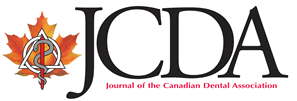 |
Current Issue | Subscriptions | ||||||
| Back Issues | Advertising | |||||||
| More Information | Classified Ads | |||||||
| For Authors | Continuing Education | |||||||
|
||||||||
 |
|
Implant Prosthodontic Management of Anterior Partial Edentulism: Long-Term Follow-Up of a Prospective StudyFULL TEXT
• John P. Zarb, BA, DDS • A b s t r a c tMethods: The information for this paper was gathered from the charts of the first 30 consecutive, partially edentulous patients treated at the IPU. These patients all had Class IV edentulism and formed part of the original prospective clinical studies that were initiated in 1983. The patients' dental history suggested maladaptive experiences with traditional removable prostheses or a reluctance to have intact or quasi-intact teeth prepared as retainers for fixed prostheses. Fifteen men and 15 women treated with 94 Brånemark dental implants, supporting 34 prostheses, were followed until June 2000 (25 patients) or until they were lost to follow-up (5 patients). The multiple missing teeth occurred in 19 maxillae and 15 mandibles. Results: The original prosthodontic treatments were intended to result in 33 fixed partial prostheses and 1 overdenture. At the time of this report, 25 patients with 86 implants supporting 31 fixed prostheses and 3 overdentures had been followed for an average of 12 years (range 7–16 years). The overall survival of implants was 92%. The difference between men (94%) and women (89%) was not statistically significant. Conclusions: This report is an interim update on an ongoing long-term prospective study. The results so far demonstrate a high survival rate for Brånemark implants supporting tissue-integrated prostheses for the management of anterior partial edentulism.
MeSH Key Words: dental implants; denture, partial, fixed; jaw, edentulous, partially/surgery
Reply to this article | View replies [0]
|
|
|
Full text provided in PDF format |
|
| Mission Statement & Editor's Message |
Multimedia Centre |
Readership Survey Contact the Editor | Français |
|